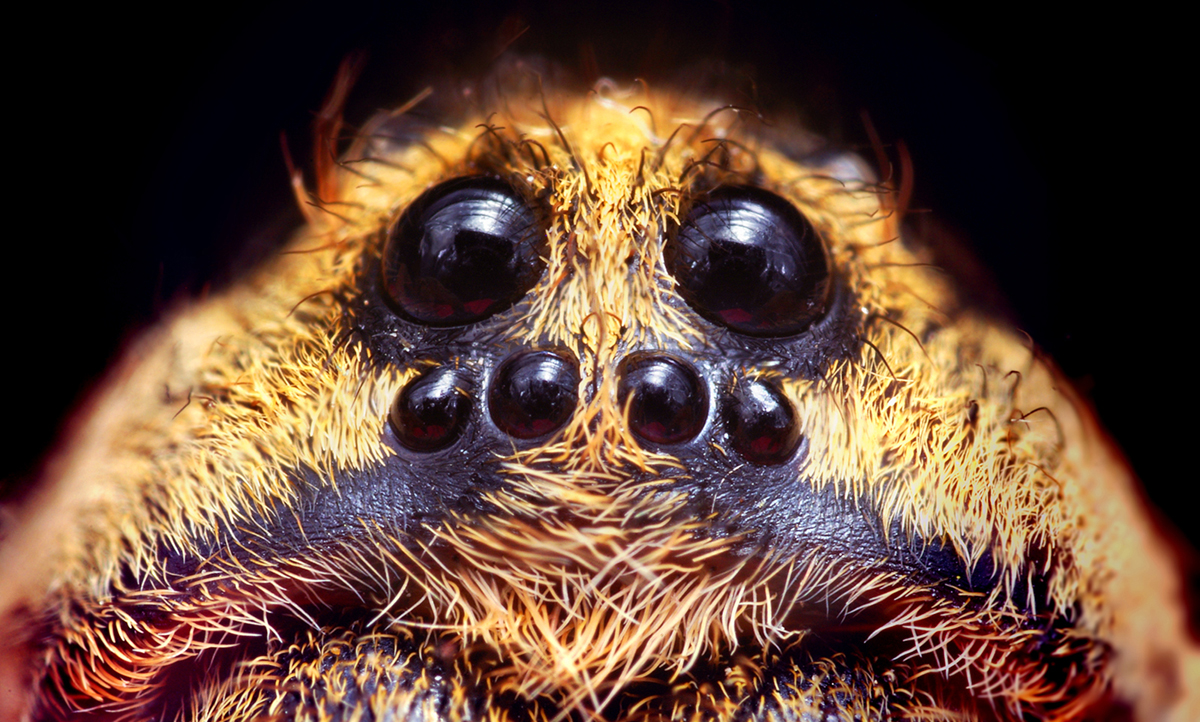Science News
Creepy Spiders
October 31, 2011
by Greg Farrington

Happy Halloween! We thought we’d get you in the mood with spiders and some of the creepiest ones, to boot—Lycosoidea.
What are Lycosoidea? They are the wolf spiders and their kin, with probably 10,000 species around the world, known and undiscovered (what’s that under your bed?). Since they are major predators (and prey) around streams and rivers, they are ecologically vital. The legendary tarantula of the Mediterranean, a supposedly venomous spider for which the only bite cure is to dance the tarantella, belongs here. Schizocosa is a model organism for studies in invertebrate behavior, perception and learning, and Cupeinnius is the model for understanding spider senses (just ask Tobey Maguire). The South America tropical wolf spider Phoneutria, with its deadly combination of venom, attitude and familiarity, is probably the most dangerous spider in the world.
The California Academy of Sciences has one of the world’s best collections of these spiders. During September, spider experts and students from across the US and from three countries in South America met to study the collection and share information. The aim was to understand the phylogeny—or evolutionary history—of Lycosoidea. From this understanding, the scientists hope to make generalizations about invertebrate evolution and geography and make predictions about venoms and venom therapies.
Collectively these researchers are assembling a dataset of more than 300 observations across 80 species, representing the full range of these spiders.
Participants included the Academy’s Charles Griswold and Darrell Ubick, Tracy Audisio and Liz Morrill (San Francisco State University), Natalia Chousou Polydouri (UC Berkeley), Petra Sierwald (Field Museum in Chicago), Diana Silva Dávila (Peru), Luis Piacentini (Argentina), and Lina Almeida, Daniele Polotow and Estevam Cruz (Brazil).
The "Lycosoidea Summit" was made possible by the resources of the Academy, including gifts from the Schlinger Foundation and estate of Bill and Maria Peck, the Lakeside Fund for International Students, and the Harriet Exline Frizzell Fund of the Academy’s Department of Entomology.
I asked Charles, our fearless curator of arachnology, why he studies these spiders.
Nothing really makes sense except in the context of evolution, and our job is to map evolution. So the evolution of a big, ecologically and medically important group like these spiders is information that some of us need now, and everyone may need in the future.
Our aim is to find the phylogeny, or evolutionary tree, of these spiders. So we're not specifically studying venom, or behavior, etc., except insofar as these data help to inform the phylogeny.
But, in the case of deadly spiders like Phoneutria, an understanding of its place in the phylogeny also provides a potential map of the evolution of its venom.
Learn more about the research Charles and his colleagues do here. He was also featured recently on ABC7’s production of “Reefs to Rainforests: The Great Expedition,” available online here.
Greg Farrington is the Executive Director of the California Academy of Sciences.
Image: Opoterser/Wikipedia